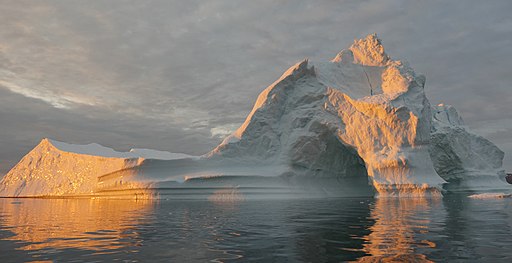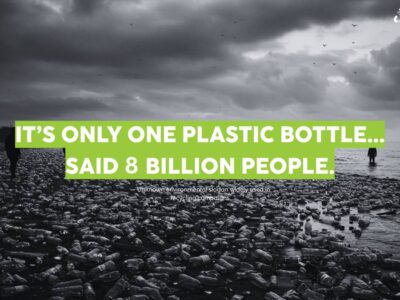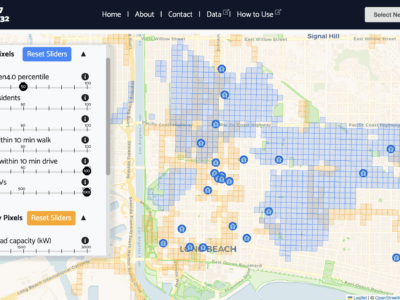Arctic Futures: White Shield or Blue Economy
Multiplying proposals for ice restoration face geopolitical obstacles
Ice-thickening. Glacier curtains. Cloud brightening… Proposals for Arctic climate interventions seem to be multiplying by the day.

The changing climate is not only shrinking ice caps and ice sheets, but also bringing much greater than average temperature rises in polar regions. These impacts particularly disrupt the lives and livelihoods of Arctic Indigenous Peoples.
Arctic impacts are also linked to wider global harms. Total loss of the Greenland ice sheet, for example, would raise sea levels globally by more than 20 feet. Many such cryospheric systems might be subject to tipping point effects. This means that in practical terms the loss of the Greenland ice sheet would be irreversible. However it is unclear whether Arctic sea ice exhibits similar tipping characteristics, although it loss of sea ice could exacerbate other harmful climate feedbacks.
These impacts and risks have led to many scientists exploring and assessing possible ways to slow or halt warming effects in the Arctic. Some assessments and research activities concern possible climate geoengineering techniques as well as more conventional mitigation and adaptation prospects.
Multiplying proposals
Last month the ‘Ocean Visions’ coalition of research institutions released an Arctic Sea Ice Road Map. This reviews 21 different approaches for protecting sea ice including both localised and large scale geoengineering techniques. Ocean Visions say their findings reinforce:
“the importance of accelerating and scaling up investment into must-have actions – including global greenhouse gas emissions reductions, especially methane, carbon dioxide removal, and reducing localized black carbon emissions … [and point] to a number of additional pathways that merit investment in further research to fill knowledge gaps about impacts, risks, and feasibility … Some of the approaches, such as methane abatement, are already mature but require rapid and accelerated investment to scale. Others, such as ice thickening, are not yet mature and are prime targets for accelerated research and development to understand their potential.”
Also in September, the New Scientist magazine published a leader supporting further experimentation and deployment of ice thickening. The leader claims that: “If we want to preserve the dwindling ice in the Arctic … [we] need to use geoengineering to refreeze this precious ecosystem.”
In the same issue the magazine also published an optimistic account of a field experiment by Real Ice – a UK business start-up. The trial used a hydrogen powered pump to pump seawater onto the ice. Some local thickening of the ice layer was recorded. The company sees this as a way to prevent “a blue ocean event in which Arctic sea ice disappears entirely … a tipping point with catastrophic global consequences.”
One of Real Ice’s collaborators is the Centre for Climate Repair at the University of Cambridge. The Centre has been researching prospects for ice restoration for some years. Their research also encompasses cloud brightening, stratospheric aerosol injection and sea curtains as tools to restore or maintain Arctic ice.
More attention
In addition, earlier this year the University of the Arctic published a rapid horizon scan. They tallied 40 “interventions to slow down, halt, and reverse the effects of climate change in the Arctic and northern regions.” The International Arctic Science Committee (IASC) is developing a white paper on Geoengineering to Save the Arctic. This follows a workshop discussing Stratospheric Aerosol Injection (SAI) and sea ice albedo interventions. And the University of Chicago published a white paper, sponsored by the David Keith’s Climate Systems Engineering Initiative. The paper sets out an agenda for research into ways to limit glacial ice-sheet deterioration and associated sea level rise. It focuses on prospects for reducing melting at glacial outflows, or slowing glacial flow by intervening in basal hydrology.
Might such interventions work?
Despite some of the overblown rhetoric, most of these initiatives are at an early stage. Even where the techniques appear feasible, much more research is needed to establish whether they could be scaled safely and appropriately. And to determine what their climate impacts and side-effects might be at scale. There are many scientific uncertainties. Here I just want to highlight two.
First, the wider climatic impacts of geoengineering techniques deployed in the Arctic. Modelling studies have exposed that solar geoengineering in just one hemisphere could trigger serious harmful effects. It would shift the intertropical convergence zone, interfering with monsoonal systems and precipitation across tropical regions. Whether other mechanisms that disproportionately cool the Arctic would have the same effects has yet to be modeled, but seems worryingly plausible. If so, any meaningful Arctic cooling program would need a counterbalancing Antarctic cooling program. This would likely be a much larger logistical challenge in those more remote and extreme conditions.
Second, there remain huge uncertainties about the capacity of such interventions to actually affect tipping events. These may already have been triggered, or result from multiple drivers, not just temperature.
Could we actually deliver them?
Even if such interventions can be demonstrated to be scientifically valid, practical and political questions of delivery weigh heavy. For example, will there be surplus green hydrogen to power millions of pumps? Will there be adequate vessels suitable to operate in polar oceans?
Not only are these technically difficult environments to work in, but the Arctic is a zone of geopolitical conflict.
All the proposals for research or testing of Arctic interventions outlined above reflect a particular scientific imaginary of the region. This vision of a space of exception from politics as usual is a legacy of the cold-war era. Then the Arctic was a space of relative détente – at least for scientific collaboration. And it allows scientists to imagine that international cooperation to maintain the ‘great white shield’ of a frozen Arctic Ocean might emerge in coming decades.
But contemporary state imaginaries of the Arctic diverge strikingly from the scientific ones, as my colleagues and I explore in a recent paper in Conflict and Cooperation. There are still threads of security rhetoric compatible with ideas of restoring ice cover and permafrost. Military operations are certainly easier on frozen surfaces within national territories than on melting ice and bogs. But the main security benefits of a white Arctic would come from there being simply less activity in such a region.
Arctic geopolitics
And this runs directly counter to most current state imaginaries. The blue Arctic is a key site of economic activity for all the littoral Arctic states, and indeed for others such as China. A blue Arctic is of such importance to China that in 2018 the country declared itself a ‘near Arctic state.’ Open Arctic sea lanes dramatically shorten shipping times from China to Europe. China argues that international legal treaties grant it freedom of navigation and overflight and rights to conduct scientific research, lay cables, and develop fisheries and other resources in the Arctic high seas.
For Russia, Canada, the US and Norway too fisheries, minerals, oil and gas resources, and tourism potential are economically important. They underpin arguments for ensuring continued access to both territorial waters and the wider region. And for Greenland the same prospects, particularly focused on minerals extraction facilitated by retreating ice, promise leverage for independence from Denmark.
Continued development of an Arctic ‘Blue Economy’ might also involve mobilizing Arctic resources for carbon removal – perhaps through the highly controversial prospect of ocean fertilization. Its hard to imagine such a commitment as more than rhetorical. But even if it materialized, carbon removal in an Arctic Ocean could scarcely be expected to compensate for increasing exploitation of new oil and gas reserves .
Where do we go from here?
Making efforts to turn the Arctic back into a space of cooperation – and climate stability – are of course preferable to the alternative. But we must careful to avoid raising false hopes regarding the Arctic, or the potential of geoengineering interventions.
Many of the researchers involved in the proposals and assessments discussed above see their goal as some form of repair. This too demands more humility and caution. Misplaced hubris about human capabilities to restore functioning ecosystems or even earth-systems like the climate carries huge risks that continued damage will be justified by the promise of future repair.
Instead we should begin our explorations from the premise of care. We must first build respectful relationships with the systems and environments we wish to care for. And with the Indigenous peoples already dependent on them.







Reader Comments